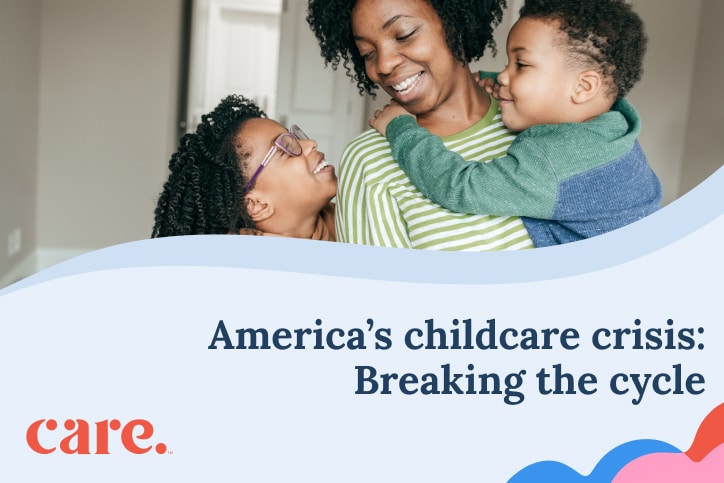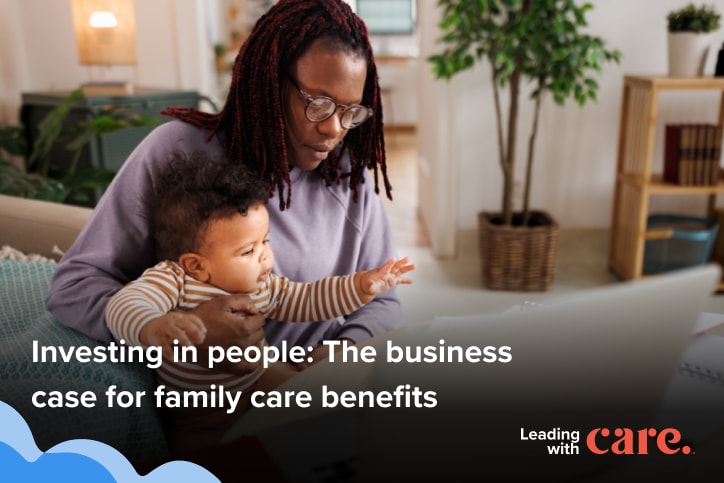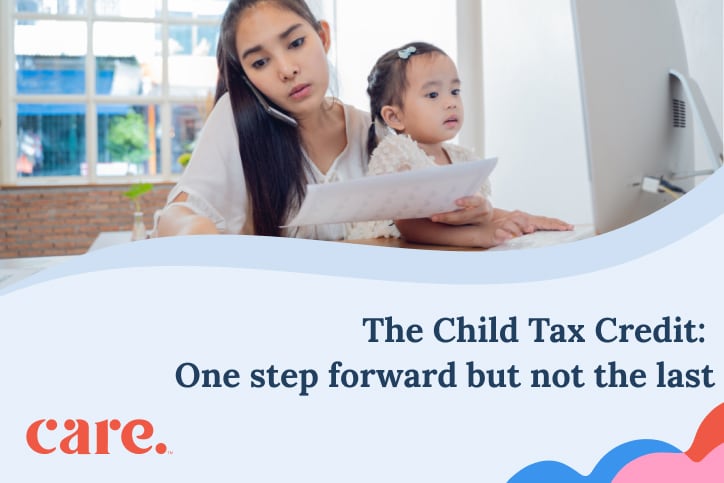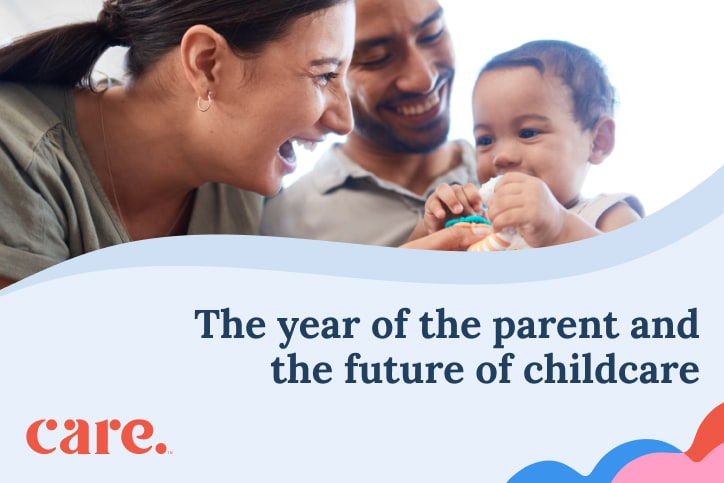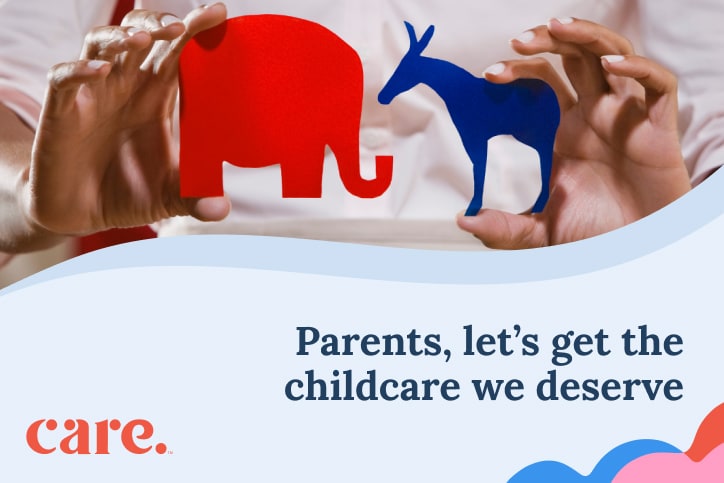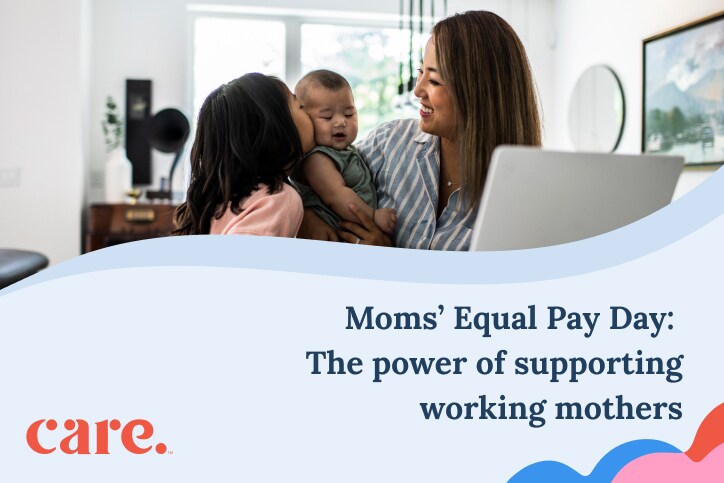History is repeating itself and the stakes could not be higher for American families. Year after year, parents, children, and childcare providers and workers find themselves grappling with a system in crisis and yet, despite the far-reaching impact of childcare, we’ve seen no substantial changes in support from the federal government in decades. We remain stuck with outdated policies despite overwhelming data from think tanks, research groups, and even an Op-Ed from Secretary of Commerce Gina Raimondo that stable and affordable childcare has a positive economic impact.
While there have been unforeseen circumstances that worsened the crisis (i.e., the COVID-19 pandemic), this is ultimately a self-inflicted wound. The issues that plague this sector have long existed and been left unattended. Inequity in supply and demand, the rise in childcare deserts, the growing cost for families, and low wages for workers, to name a few. Now we stand at yet another critical juncture as we’ve gone over the childcare funding cliff. How did we end up here and how do we break this cycle once and for all?
How did we get here?
The COVID-19 pandemic put a spotlight on the fragile nature of America’s childcare infrastructure, but the challenges we face today have roots that stretch back decades. Roughly 50 years ago, we were on the cusp of achieving universal childcare in the United States. The Comprehensive Child Development Act of 1971 passed with bipartisan support through both chambers of Congress, but was vetoed by President Nixon due in large part to concerns about how access to childcare would impact American families in general and the role of women, in particular. It is ironic, therefore, that women in the workforce have been so critical to our economic growth, but more on that later.
This veto cast a long shadow that laid the groundwork for the childcare crisis we face today. Whether you evaluate the situation by cost, quality, or availability of childcare, we are failing as a nation. In 2018, the Center for American Progress revealed that 51 percent of people lived in a childcare desert (locations where there are three children for every available daycare slot); today, in the post-pandemic era, we can hypothesize that this number has only grown. Fewer slots available mean long waitlists and higher enrollment fees for families already buckling under the cost of care which, whether in-home or in-center, has increased over 50 percent in the past decade.
The childcare sector was one of the hardest-hit during the COVID-19 pandemic triggering a domino economic effect. Between lockdowns and eventual closures of tens of thousands of daycares, parents struggled to balance care and work. Because women in America still disproportionately shoulder childcare responsibilities, many had no choice but to quit the workforce to stay home and look after their children. Dubbed “The Great Resignation,” nearly three million women were impacted.
But as they say, every cloud has a silver lining and there seemed to be a glimmer of hope that this crisis was finally the wakeup call the government needed to take concrete action. The American Rescue Plan (ARP) injected necessary funding into the childcare industry and expanded both the Child Tax Credit and the Child and Dependent Care Tax Credit for families. It seemed, for a moment, that childcare was finally being acknowledged as critical to economic health.
Yet here we are. Again. Despite data that shows the benefits of the enhanced tax credits or the fact that the ARP funding has kept childcare center doors open and daycare workers working, the government let them all expire putting us over the proverbial cliff, and threatening to undo any progress made in recovering from the devastation caused by the pandemic.
Childcare providers will once again walk a financial tightrope and have to make painful decisions: Downsize staff which also requires eliminating daycare slots, reduce wages, or in some cases, close their doors. This, in turn, means parents will face even higher rates, even longer waitlists, and the agonizing choice: care for their children or their jobs. Unfortunately, we have seen this before, except this time it is worse. According to the Bureau of Labor Statistics, there are 100,000 fewer child care workers now than before the pandemic. As caregivers look to find better paying and more stable employment, this number figures to grow.
The economic impact of childcare
Part of the problem is that, as a country, we don’t acknowledge just how important childcare is to us all. Childcare is not just a service; it is an economic driver that promotes workforce participation. Access to affordable childcare has a direct impact on labor participation because without childcare, parents can’t work. In fact, according to data from the Census Bureau, parents with children under five and not yet old enough to attend school are about twice as likely to miss work for childcare reasons as people with older kids. And $3 billion in revenue is lost annually to businesses due to employee absenteeism as the result of childcare breakdowns.
It’s also important to acknowledge how gender comes into play when discussing the childcare crisis. Female labor force participation has been the biggest driver of GDP growth over the last 50 years. In other words, enabling women to work benefits us all. That’s why the Great Resignation was so troubling and why the return of women to work since the pandemic has been widely heralded. It is also why the childcare cliff is so disturbing…and feels so familiar. Just as we saw during the pandemic, when childcare is not available, many women are forced to leave their jobs. History could be about to repeat itself.
For those who think “You chose to have children, it’s your problem” or those who don’t have children and think none of this affects them, consider this: The childcare crisis is more than an individual family issue. It’s a social issue, a business issue, and an economic issue. The bottom line is that a lack of adequate childcare for infants and toddlers across the country is now estimated to cost the U.S. $122 billion annually in lost earnings, productivity, and revenue, according to research by ReadyNation.
Beyond the economic impact, strong childcare promotes positive early childhood development. An economic analysis by economist James J. Heckman shows that high-quality care from birth to age 5 yields a return on public investments of 13 percent annually, including better outcomes in education, earnings, and health. Plus knowing that their children are safe and taken care of eases parents’ stress and allows them to be more present with their children outside of work, strengthening bonds for the entire family.
There is bipartisan support for childcare
Given the wealth of data, we know that childcare is a cornerstone of economic growth and family well-being. We also know that 86 percent of voters agree that improving the quality of child care and early learning programs and making them more affordable for families are good investments of taxpayers’ money. Additionally, the majority of both Republican voters (61 percent) and Democratic voters (88 percent) agree the federal government should increase funding to help correct the childcare crisis. And finally, there is bipartisan support for childcare in Congress. So why are we still living with the same crumbling care infrastructure we’ve had for decades?
The obstacle is agreeing on just what should be done. The good news is, there are glimmers of hope for progress. Earlier in the year Representatives Kim Schrier (D-Wash.) and Brian Fitzpatrick (R-Pa.) co-sponsored the Improving Child Care for Working Families Act that would increase the amount parents can save pre-tax in dependent care flexible spending accounts from $5,000 to $10,500, better reflecting the childcare costs that parents face.
There are also groups like the Bipartisan Pre-K and Child Care Caucus and the Congressional Bipartisan Affordable Childcare Caucus who work to raise awareness and advocate for early childhood care and education to make it more accessible and affordable. So, it is extremely clear there is passion here regardless of party lines.
Building a brighter future today
Though we are far from fixing this complex issue, there is still hope. While we collectively work towards a reimagined and rebuilt care infrastructure, there are steps that can be taken today using systems and tools already at our disposal. With the childcare cliff top of mind, we might start there by renewing and even expanding the ARP funding. That move alone could provide a modicum of stability to this fragile sector.
Additionally, we can leverage existing tax policies and reevaluate how they could be tailored to suit the evolving needs of today’s parents. During the pandemic, the Child and Dependent Care Tax Credit and the Child Tax Credit were both expanded, but only temporarily. If we permanently reinstated those increases and expanded Dependent Care Assistance Programs (DCAP), we would be helping parents afford raising their children which in turn benefits working families, care workers, and employers alike.
These would be steps in the right direction, but only gap stop measures while we develop a more comprehensive strategy for reimagining America’s childcare system. We do not need to start from scratch. Other nations have successfully implemented childcare programs; we should assess those programs and see what we might adapt to suit our own country’s unique needs.
Systems change of this magnitude isn’t easy but the need – and the value – is clear. And there is reason, despite everything, to be optimistic: Some of the most significant progress and changes in America came out of times of crisis. Consider the New Deal’s creation of Social Security and unemployment benefits or the creation of Homeland Security as examples. We are once again at a pivotal juncture where we can choose between action and inaction, between repeating the past or learning from it.
